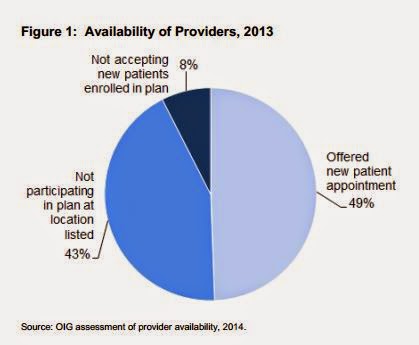U.S. study finds Medicaid patients may have hard time finding doctor; half not taking new patients or not at given location

Kentucky Health News
The expansion of Medicaid in Kentucky and other states under federal health reform has provided more people than ever with health coverage, but finding a doctor who will accept Medicaid patients could be a problem, a study has concluded.
 The inspector general of the U.S. Department of Health and Human Services found that half the doctors who are supposed to see Medicaid patients either aren’t taking new patients or couldn’t be found at their last known address.
The inspector general of the U.S. Department of Health and Human Services found that half the doctors who are supposed to see Medicaid patients either aren’t taking new patients or couldn’t be found at their last known address.
Kentucky has not received “many such complaints” from Medicaid participants saying they could not find a doctor, but they’re in a clear minority, Gwenda Bond, spokeswoman for the state’s Cabinet for Health and Family Services, said in an e-mail.
“We survey Medicaid members annually and they report a high (approximately 90 percent) satisfaction rate with finding a doctor,” Bond said. She noted that customer-service lines of Medicaid managed-care organizations “can help members find doctors and new members are also assisted with finding a physician when they sign up.”
As of Nov. 1, more than 1.2 million Kentuckians were on Medicaid, including 358,703 who were newly eligible because of the expansion under the Patient Protection and Affordable Care Act. Approximately 20,000 more adults who had been eligible but never enrolled are now on the program, presumably because of publicity about the expansion.
 |
| Cabinet for Health and Family Services spreadsheet |
Kentucky’s directory of physicians who accept Medicaid is updated monthly, but it does not indicate those who are not taking new patients, Bond said. As of December, the directory listed 14,593 physicians; 1,835 physician groups; 3,470 advanced registered nurse practitioners; 615 ARNP groups; 810 physician assistants; and 204 PA groups. The list does not include specialists.
In the federal study, 8 percent of the doctors located in the survey participated in Medicaid but were not accepting new patients. Another 8 percent who were found at the locations listed said they did not participate.
The study was based on phone calls to a stratified random sample of 1,800 doctors listed by health plans under contract with Medicaid in 32 states. It found that 35 percent of the providers could not be found at the location listed by a Medicaid managed-care plan.
“In these cases, callers were sometimes told that the practice had never heard of the provider, or that the provider had practiced at the location in the past but had retired or left the practice. Some providers had left months or even years before the time of the call,” the study report says.
“When providers listed as participating in a plan cannot offer appointments, it may create a significant obstacle for an enrollee seeking care,” the report says. “Moreover, it raises questions about the adequacy of provider networks. It suggests that the actual size of provider networks may be considerably smaller than what is presented by Medicaid managed-care plans.”
The study also found long wait times for the doctors who accepted Medicaid patients.
The median wait time was two weeks for providers who offered appointments, but more than one-fourth of providers had wait times of more than a month and 10 percent had waits longer than two months. Specialists were more likely to offer appointments than primary-care providers, but had a median wait time of 20 days.
The study recommended that the Centers for Medicare & Medicaid Services assure that each state’s provider network is accurate and adequate, and to make sure that states are complying with the existing state standards for wait times. CMS agreed with these recommendations.